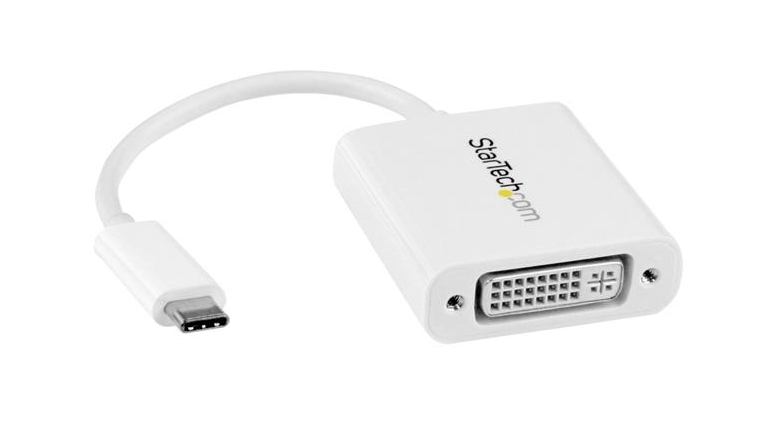How to expand your MacBook Pro with these essential accessories
Essentials to connect older peripherals

The adoption of USB-C ports as the only type on the 12-inch MacBook and the 2016 MacBook Pro line-up means you’ll need adaptors to connect existing equipment to them.
Thankfully, well-known retailers such as Amazon, Apple and Google already sell a good range of them for connecting printers, storage, monitors and more.
How to connect a display to the MacBook
Why you can trust TechRadar
The USB-C and Thunderbolt 3 ports on MacBooks are capable of outputting a video signal, and you don’t even have to replace your existing external monitor.
What you will need, though, is an adaptor to match your display’s input. Thankfully, those that are available address connections all the way back to VGA right up to Thunderbolt.
VGA
You might need a VGA output to connect to an old projector, say. Apple’s USB-C VGA MultiPort Adaptor (£49/US$49/AUS$75 until the end of 2016) has this covered, and it also includes a USB-C power port (essential on the single-port, 12-inch MacBook).
It also includes a USB-A port for connecting another device – or even to connect a hub with additional ports, with an ample 5Gbps of bandwidth to share among devices you connect to it, if your hub supports USB 3.0.

HDMI
There are USB-C adaptors available that provide only an HDMI output, which isn’t so much of a problem on a MacBook Pro with multiple ports.
However, models that cost only a small amount more often provide additional ports, which is great for maintaining expansion flexibility. Like its VGA model, Apple’s Digital AV MultiPort Adapter (£49/US$49/AUS$75 till the end of 2016) has a USB-C power port and a USB-A one for peripherals.
It can run a 4K display, but it conforms to the HDMI 1.4b spec, so you’ll only get a 30Hz refresh rate out of it – okay for most consumer video, but you’ll spot staggered motion elsewhere, even when moving the pointer. If your monitor also has DisplayPort, check whether it supports 4K at 60Hz for a more pleasant experience.

What about 4K at 60Hz over HDMI?
HDMI ports on recent displays – particularly UHD TVs – may support the HDMI 2.0 or 2.0a specification, giving a 60Hz refresh rate and, in the latter’s case, a wider color gamut to support HDR content.
We’re still waiting on an Uptab HDMI 2.0a adaptor to arrive so we can test it ourselves; in the meantime, bear in mind that one buyer’s Amazon review of that model says they needed the adaptor and their monitor connected at startup for macOS to work with it, while Windows was a plug-and-play experience. We’ll update this section once we’ve been able to try that and other HDMI 2.0 adaptors first-hand.
DVI
Apple doesn't make a USB-C adaptor with a DVI port, but as with previous video ports you can work around that by plugging a DVI to HDMI cable in to its Digital AV MultiPort Adaptor.
You can get one from Amazon or other good technology retailers for just a few dollars or pounds. If you’d rather reuse your existing DVI to DVI cable, though, StarTech.com has an adaptor you can add to it (£44.39/US$41.99/AUS$69.29), though it has no other ports, so we prefer the former route for its flexibility.

Thunderbolt displays
A monitor that uses a full-on Thunderbolt (1 or 2) connection, such as Apple’s now-discontinued Thunderbolt Display, can be connected to a MacBook Pro‘s Thunderbolt 3 port through that company’s Thunderbolt 3 to Thunderbolt 2 adaptor (£29/$29/AUS$45 until the end of this year).
If you’re aware that Thunderbolt carries a DisplayPort signal in addition to data, don’t fall into the trap of assuming this adaptor will enable a simpler DisplayPort connection on your monitor to also work through a Thunderbolt 3 port – see below for further details.

DisplayPort
Apple is explicit that its Thunderbolt 3 to 2 adaptor will not work with a monitor that accepts a DisplayPort input, which can cause some confusion if you’re familiar with Thunderbolt on a technical level.
Instead, you’ll need a USB-C to DisplayPort cable. The Google Store sells one for £32.99/US$39.99/AUS$59.99.
Mini DisplayPort 61w
All-in-one USB-C cables with a Mini DisplayPort connector at the other end are harder to find than the full-size variety.
You can work around this by adding an adaptor between the two sizes, such as StarTech’s (£15.57/US$17.45 from Amazon, AUS$35.19 from StarTech's website), to the full-size DisplayPort cable from Google we mentioned above. We’ve.also seen fairly inexpensive USB-C adaptors (about £16/US$17) that reuse your existing Mini DisplayPort to Mini DisplayPort cable, available online though they’re made by less well-known brands.

Sign up for breaking news, reviews, opinion, top tech deals, and more.